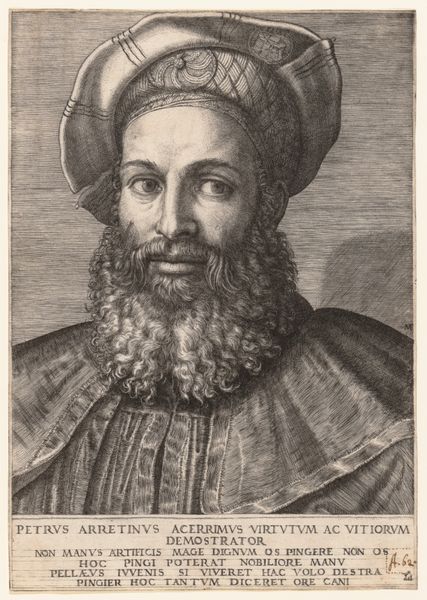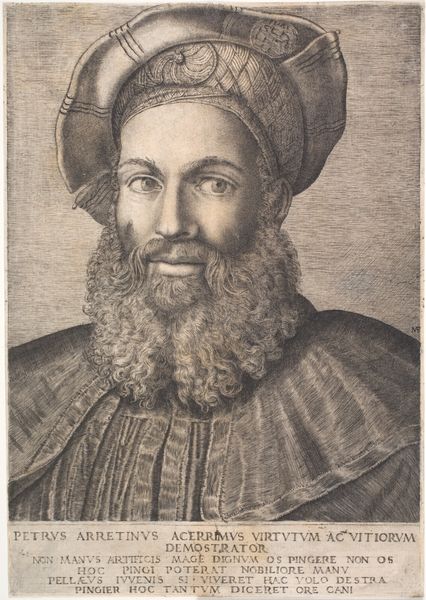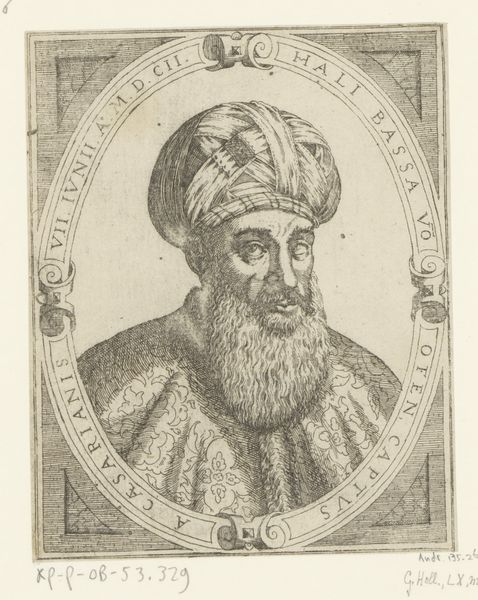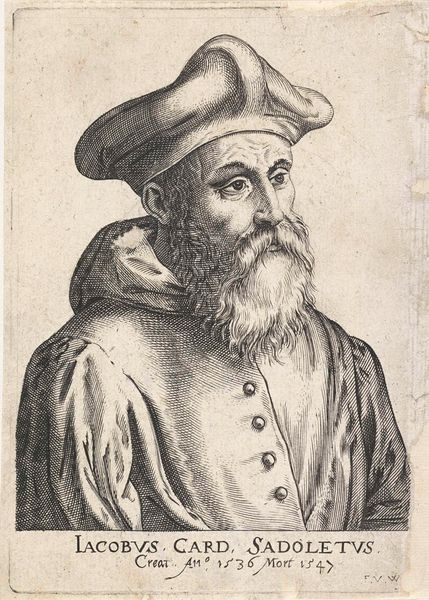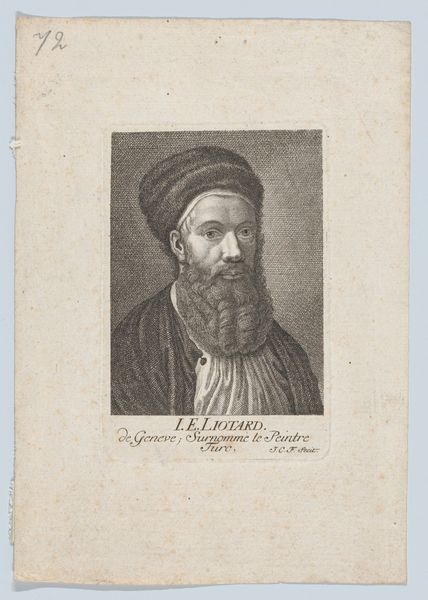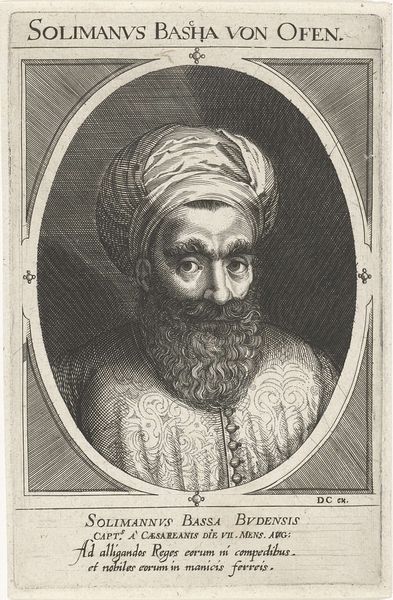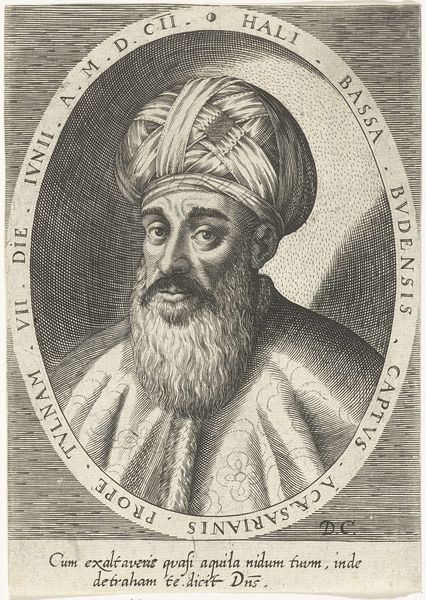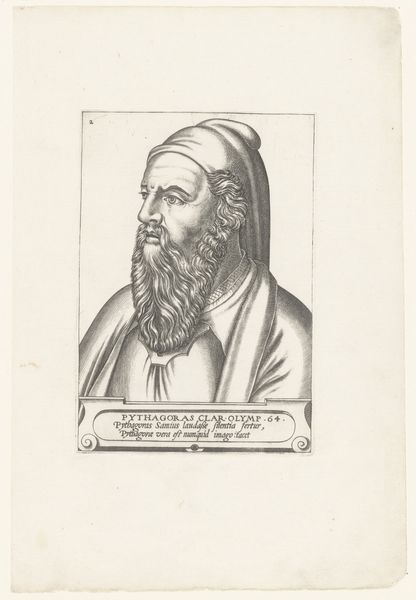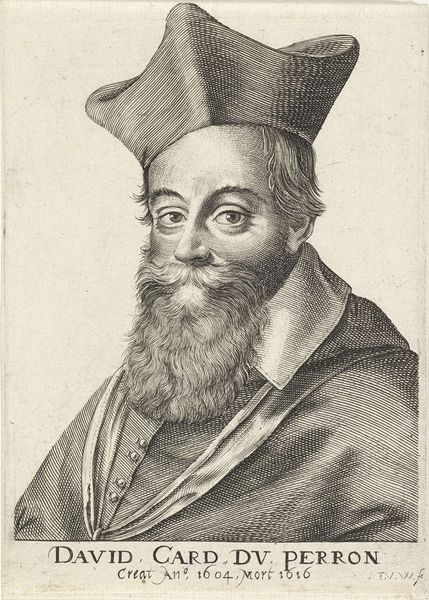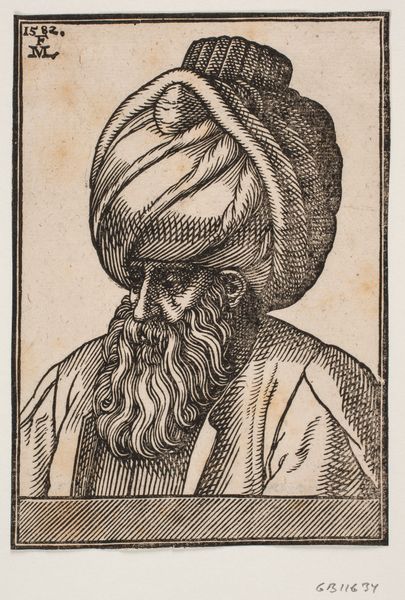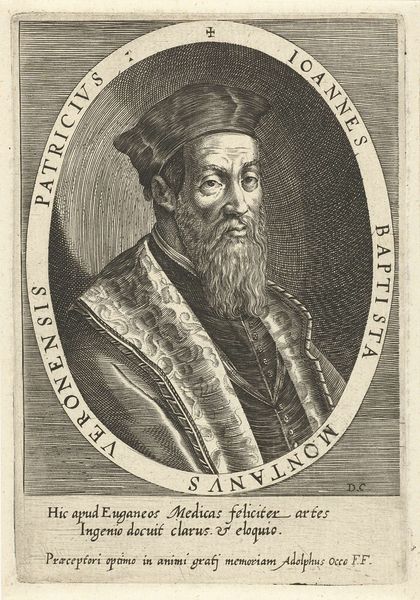
drawing, print, engraving
portrait
drawing
baroque
portrait drawing
history-painting
engraving
Dimensions: sheet: 7 11/16 x 5 5/16 in. (19.5 x 13.5 cm)
Copyright: Public Domain
Curator: Let’s turn our attention to Wenceslaus Hollar’s engraving, "Pietro Aretino," created in 1640. Hollar, a prolific printmaker, rendered this portrait based on an earlier painting by Titian. It now resides here at the Metropolitan Museum. Editor: Ah, the eyes! There's such a direct, almost unnerving, gaze coming right at you. The detailing is astonishing for an engraving—the beard feels almost touchable. There is also an intense light, yet some heaviness in his eyes. It’s as if he carries all his words. Curator: Aretino was indeed a formidable figure—a writer, satirist, and art critic who wielded enormous influence in the Renaissance. Hollar's print, circulating widely, helped cement Aretino’s persona for future generations. The reproduction was vital in image building during this era. Editor: So, a bit like a sixteenth-century blogger who knew how to make enemies? His face has that knowing smirk of someone who’s seen it all and isn’t afraid to write about it. That turban too adds something mysterious, something theatrical to this whole persona. Curator: Precisely! And consider the context. This print wasn't just an image; it was a political statement, a cultural artifact that spoke to the power of the printed image and its ability to shape reputations and ideas, even beyond Aretino's death in 1556. Reproducing paintings as prints democratized art, making it accessible beyond the elite circles. Editor: I see how this medium matters. There’s a certain cool distance inherent in the engraving process itself – it somehow echoes the critic’s sharp observations and maybe adds another layer to his gaze. Almost as if his gaze has been forever caught under a critical eye. Curator: The distribution of such prints helped individuals and governments consolidate and exercise soft power in a more indirect, subtle manner that was less dependent on hard powers such as physical force, which had until this period been regarded as more reliable and powerful. Editor: I didn't imagine finding so much storytelling hidden in lines, in the subtleties of light and shadow. It makes you wonder how his words must have landed with a similar intensity. Curator: Absolutely. It demonstrates that even reproductions possess a potency in capturing the mood of the age, of a life that impacted that period.
Comments
No comments
Be the first to comment and join the conversation on the ultimate creative platform.

